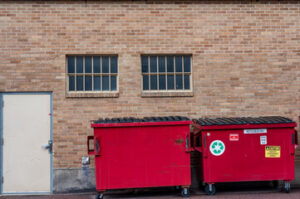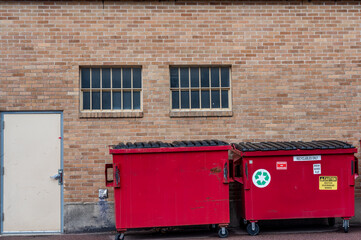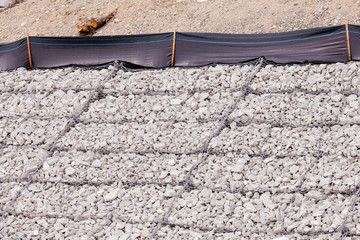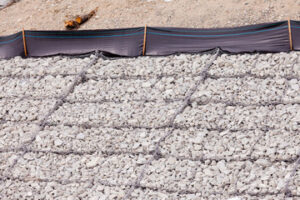Using dumpsters is a convenient and cost-effective way to dispose of junk. Look for a company that offers flat-rate pricing. This includes a fixed number of days, all fees, and taxes up to a specific weight limit.
Dumpster Rental Roanoke helps homeowners downsize at their own pace and eliminates multiple trips to the dump or transfer station. This reduces stress and increases efficiency.
When doing a home renovation, there will be waste materials left behind. These materials must be thrown away properly to avoid health issues and keep the area clean. You can get rid of these materials quickly and easily with a dumpster rental. This will help you save time and money by avoiding multiple trips to the dump.
Dumpster rental companies also take pride in their sustainability initiatives. They recycle the contents of the dumpsters, which reduces the amount of trash in landfills. For example, concrete dumpsters are sent to companies that recycle them and rock dumpsters are sent to places that accept these materials. This is a great way to reduce the amount of waste that is produced by homes and businesses.
Starting a dumpster rental business requires planning and research. You must develop a business plan that outlines your vision, services, market research, competitor analysis, and marketing strategy. This will help you decide whether your business is profitable and how much it may cost to start.
Before you begin your dumpster rental business, make sure to find out if there are any restrictions or regulations in your area. There may be zoning requirements, permits, or other regulations that must be met. You should also research the local dumpster rental companies to find out how much they charge for their services.
It is a good idea to rent out a larger dumpster when you’re renovating a house. This will make it easier to dispose of the waste materials, and you won’t have to worry about overfilling the container. You can also choose a dumpster that has an extended rental period. This will allow you to get more time for the money you’re spending.
If you’re going to open a dumpster rental company, it’s important to have a clear understanding of your target audience. Knowing your customers will help you determine how to reach them and what kind of marketing strategies to use.
Spring Cleaning
Spring cleaning is a time to clean out your closets, drawers, and other storage spaces in your home. These major cleanups can produce a lot of waste. A dumpster rental will allow you to eliminate all of this trash in one place with a single phone call for delivery and pickup. Renting a dumpster is also a great option for completing any renovations in your home. This will allow you to get rid of old furniture and other bulky items that might otherwise clog your space.
It’s important to keep in mind that dumpsters have weight limits. If you load them up to the maximum capacity, it will be very difficult for the company to haul them away. For this reason, it is a good idea to hire a dumpster that has a weight limit that will accommodate your project.
Another benefit of using a dumpster is that it will help you create a safer work environment for your employees and other workers on the job site. Without a designated place to throw the garbage, it can easily pile up around the work area and create safety hazards. Having a dumpster in the workspace will keep this debris from getting in the way of employees and will make the entire workspace more efficient.
When it comes to residential and commercial dumpster rentals, it’s essential to choose a company that has been in the business for a long time and has a reputation for quality services. Moreover, the company should have experience working with local communities and will know what kinds of projects they can assist with. They should also be familiar with the local rules and regulations regarding trash disposal. They should also be able to provide the best dumpster rental size for your project. For example, if you need a large dumpster, they should be able to provide you with a 40-yard rolloff. This can be used for larger projects, including office building construction or a warehouse renovation. This will save you a lot of money in the long run. It will also reduce the risk of costly mistakes that could result in fines from the city or state.
Pest Control
Whether you’re throwing away food waste, recycling paper, or cleaning out your garage, the odor of decomposing garbage can attract pests like flies and ants. It’s important to keep a clean dumpster to prevent an infestation, and working with a professional dumpster rental company can help. Many companies have dumpster accessories that will help keep pests out of your garbage, and some even provide regular maintenance and cleaning services. Using screens or mesh covers, sealing cracks and openings, tying trash bags securely, and regularly inspecting your dumpster for signs of pest activity will all help to prevent pests from invading your dumpster and property.
One of the easiest ways to stop pests from getting into your dumpster is to cover it with a tarp when you’re not using it. This will keep most insects and critters from gaining access to the waste and can also stop odors from building up inside. Just remember to remove the tarp before your Cali Carting worker arrives to haul away your dumpster.
Another way to stop pests from invading your dumpster is by using animal repellents around the area. However, be careful about using any kind of chemical pesticides, as some can harm surrounding plants and other wildlife. If you’re looking for a “green” option, try using a dilution of ammonia with water. Spraying the diluted ammonia on your dumpster and trash bags will help to keep most animals and pests out of your dumpster.
You can also limit access to your dumpster by using a lockable lid to prevent unauthorized use and dumping. In addition, keeping the surrounding area free from debris and waste will keep pests from nesting and laying eggs. Lastly, educating employees and tenants on proper waste disposal and pest prevention will all help to prevent a pest problem in your dumpster. Prevention is always easier and less costly than dealing with a pest infestation once it’s established. By following these tips, you can keep your dumpster and surrounding area clean and pest-free. Working with a professional waste management company can also make this process much easier and faster.
Cleanups
In the course of any home improvement project, people tend to generate a lot of trash that needs to go somewhere. The best option is to rent a dumpster. Not only does it keep the waste contained and out of sight, but it also eliminates the need to haul it away yourself. This way, you can focus on the task at hand and not worry about making multiple trips to the landfill or paying tipping fees to the garbage collectors.
Another time to use a dumpster is for yard cleanup. In the fall, yards are filled with leaves, branches, and other debris. It is a good idea to rent a dumpster to get rid of these items before they turn into a fire hazard or a breeding ground for mosquitoes and other pests. With a dumpster, you can toss large piles of leaves and branches right into it without worrying about lugging them away yourself or leaving them out in the open where they could be stolen by someone else.
Dumpster rental companies also offer services for neighborhood cleanups. These initiatives are a great way to get the community involved in cleaning up the local area and can help prevent pollution by keeping trash from being dumped in public areas. However, it is important to remember that there is more to managing a community cleanup than simply gathering volunteers and giving them rubber gloves. In order to avoid a chaotic mess, it is necessary to have some sort of central location for trash collection.
Whether you are working on a home renovation, organizing an estate sale, or doing a big backyard cleanup, a dumpster rental can make the process much easier and more efficient. You can focus on the task at hand by eliminating the need to haul away waste yourself. In addition, a dumpster can help you save money and reduce the risk of injuries from handling heavy objects. With a little planning, you can create a successful Dumpster Rental Business that will bring in a steady stream of customers.



